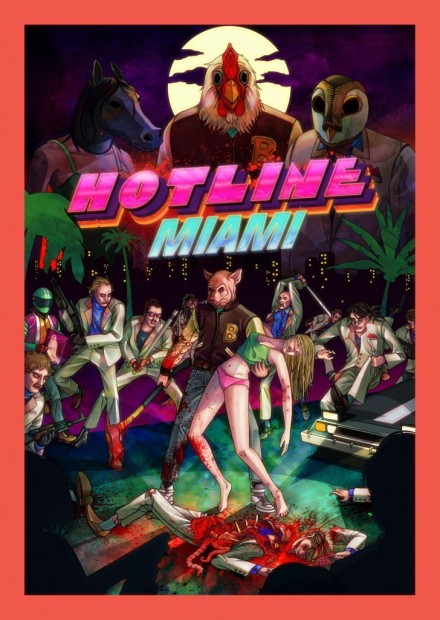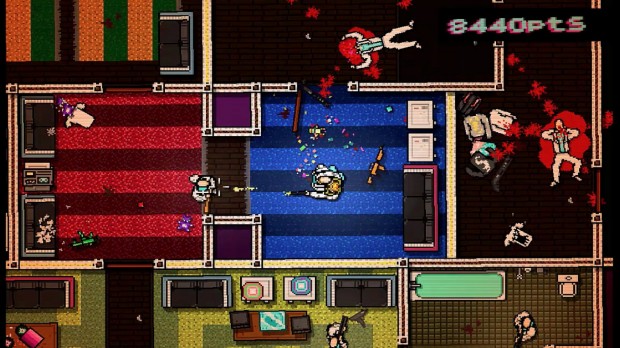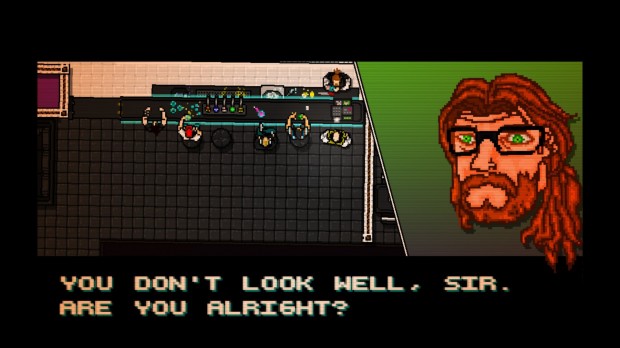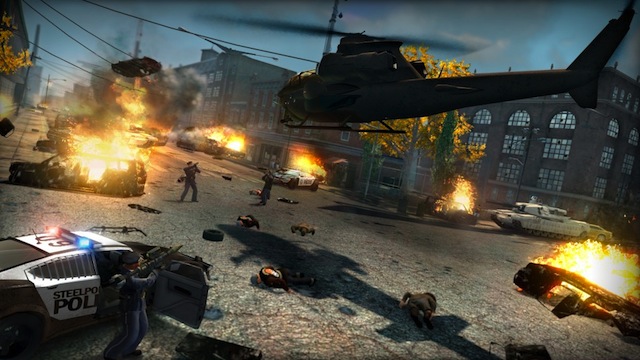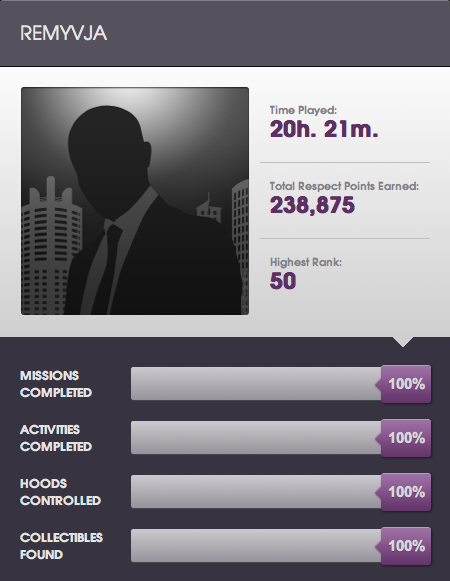I’ve spent a lot of time in 2012 playing games, but not a lot of time writing about them. As I did last year, I’d like to tell some stories or share some thoughts about the ones that meant the most to me this year. I’ll be posting one a day until Christmas. See all Games of 2012 posts.
It seems perverse to put [Hotline Miami](http://hotlinemiami.com/) so high on my list this year given the all-too-recent events of Newtown, CT. Had this been released by a major publisher or available in stores for home consoles, it would’ve incited a media frenzy, networks falling over each other to blame it for the tragedy. It could have easily replaced “Mortal Kombat” as the game to name drop when trying to source the evil in the hearts of those who would commit atrocities.
Improbably, Dennaton’s opus of neon and violence and Amiga-style graphics and blood and pounding electronica and dismemberment has escaped that scrutiny. For now, at least.
The game’s structure is rhythmic: there’s a message on your answering machine, a mysterious voice speaking in code about a location that needs your attention. You head down the stairs and into your DeLorean, and roll up to the location, which is always swarming with armed thugs. You pull on an animal mask of your choice, and head inside. Everyone dies. You leave, head to another location to receive what might be your payment, and then wake up for another day, and another message. Repeat.
It’s the “everyone dies” part that requires the most of your attention. Hotline Miami is all about the high-energy, high-tension rampage that you must execute to complete a level. With an improvised array of weapons, you’ll dance between lying in wait to take down a solo goon to busting into a room with guns blazing. Those conditioned on modern FPS games – soak up 20 bullets, hide behind cover until you’re back to full health – will be frustrated by an NES-style “one hit and you’re dead” health system. The button you may end up hitting the most is not the “fire” button but the “Restart” button, as though you’re playing Trials. It’s been called a “violence puzzle” – less about the aiming of your guns and more about managing ammo, avoiding sight lines, and keeping quiet.
The style drives the experience home. The ultra-violence is tapered somewhat by the garish 8-bit graphics, but gruesome close-range assaults make it clear what body parts are going where. There’s a [fantastically assembled soundtrack](https://soundcloud.com/devolverdigital/sets/hotline-miami-official), pounding and driving through the levels, that easily takes my favorite soundtrack of the year honors. And there’s small details – the way the camera swings the world just a little off-kilter, the shadows passing as you drive the car – that raises it just a notch higher.
And then there’s the ultimate question: why *are* you killing all these people, and who is that voice on the answering machine? The game delivers the story in small drips of ephemera, like newspaper clippings or audio from a television, but it’s not long before things go off the rails and you’re questioning if any of what you’re seeing is real. Is it a fever dream? Is it a geo-political plot? Is it a [meditation on violence in video games](http://www.gamasutra.com/blogs/RamiIsmail/20121029/180408/Why_Hotline_Miami_is_an_important_game.php)?
I do subscribe to the idea that Hotline Miami is a meta-commentary about violence in games. When I consider my most lasting memory of the time I spent with the game, it is not any particular murder it asked me to commit. It’s not the bizarre conversations I had with what seems like the in-game representation of my psyche, or the corpses that randomly appeared in the video store. Instead, it’s that frequently moment right as the last man falls lifeless to the floor in a level, and the music fades into a cycling low hum and static. The adrenaline running through you and the accomplishment you feel for finally toppling the levels fades to emptiness. You step back through the level, revisiting everything you’ve done – all the blood spilled on the floor and the walls – and you are left to consider it all. And as your world and sanity fall apart in the game, it doesn’t always feel good.
That’s why I fear the day that Hotline Miami finally triggers a media shitstorm. For all of the violence and murder and carnage you’re instructed to commit, it provides a strong (albeit not easily deciphered) message about violence, mental health, and the power of suggestion. In a strange way, it’s reminiscent of A Clockwork Orange – and like the reaction to both Burgess’ book and Kubrick’s movie, I worry that the lessons could be missed entirely.
Hotline Miami is [available for Windows](http://store.steampowered.com/app/219150/). An OS X version is allegedly coming in the future.
